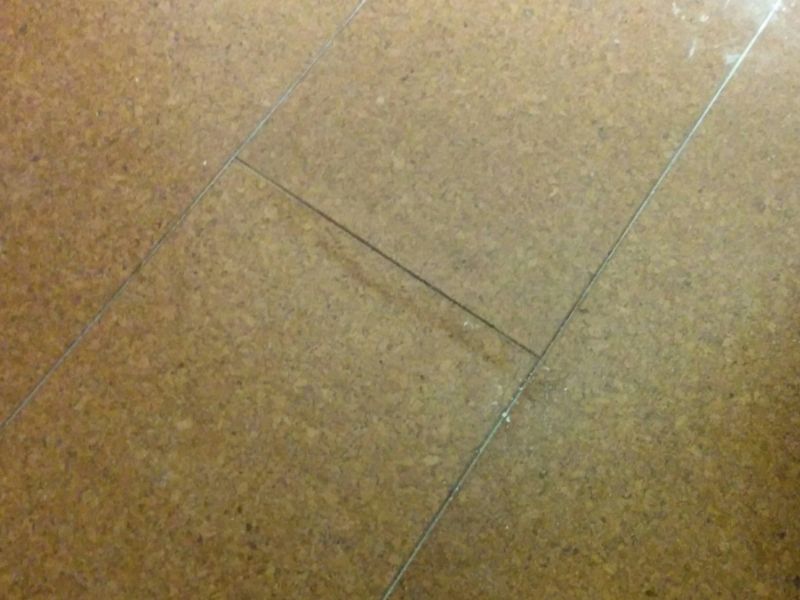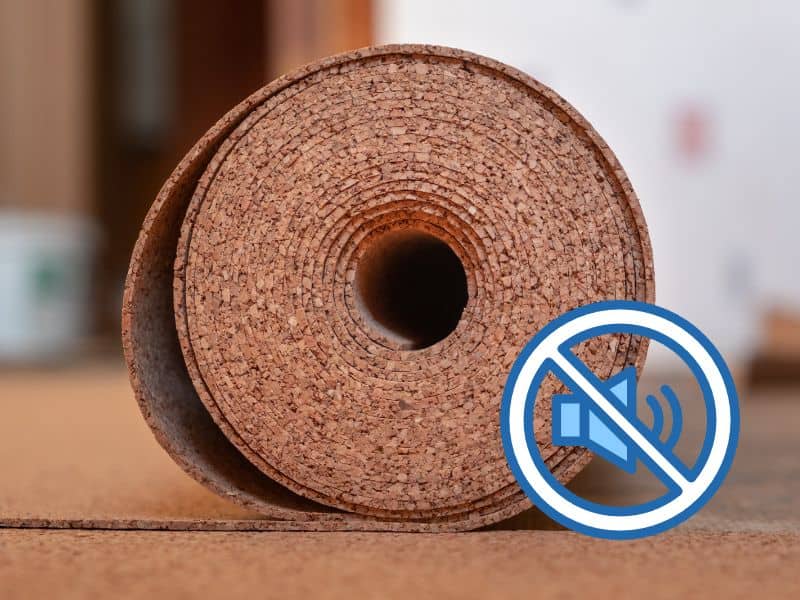Waterproof Cork Flooring: How Is It Actually Watertight?

Are you tired of worrying about spills and water damage ruining your floors? Enter waterproof cork flooring – the latest innovation in flooring technology.
While cork has long been popular due to its eco-friendliness and durability, its porous nature makes it susceptible to water damage.
However, with technological advancements, waterproof cork flooring has emerged as a viable option for those seeking beautiful, sustainable, and water-resistant flooring.
Although cork contains suberin, a waxy hydrophobic substance that makes it highly water resistant, it’s not 100% watertight. A polyurethane or wax-based sealant is added to cork to make waterproof cork flooring that’s highly watertight. It’s advisable to reseal the floor every 5 to 7 years.
In the rest of this article, I’ll discuss the water-tightness of waterproof cork flooring and the impacts of water on this type of flooring.
I’ll also discuss the benefits of waterproof cork flooring and where to use it. Let’s get started!
Is Waterproof Cork Flooring Watertight?

Natural cork flooring is not 100% watertight because it absorbs water when exposed to it for too long. While cork is water-resistant, immersing a cubic inch of cork in water for 48 hours makes it gain about 3% of its weight due to water absorption. Only sealed cork floors are watertight.
Cork is a waterproof material that’s mold and mildew-resistant. It only absorbs water when it becomes wet for a prolonged period of time, a condition that happens after long-term exposure to water.
It’s worth clarifying that you can use cork flooring without sealing it in areas less prone to standing water, like living rooms. However, you must seal it with wax or a polyurethane-based sealant to make it suitable for water-prone areas like bathrooms and washrooms.
Impacts of Water on Cork Flooring
Unsealed cork flooring absorbs water due to prolonged exposure. When that happens, the floor is at risk of the following impacts.
Swelling and Warping
What happens to most floor tiles when they absorb water? They swell and warp.
The same is true when you leave cork flooring exposed to water for a long time.
As the floor absorbs water, the subsurface starts swelling and warping. The more the water gets absorbed, the more the surface swells and warps. Consequently, the tiles get lifted off the subfloor and become uneven, creating a warped, unsightly floor.
Unsightly Stain Marks

Cork flooring is finished in different colors, depending on the home’s décor.
The finishing and color will only remain if you care for the floor and avoid exposing it to standing water.
Water can cause stains on cork flooring if not wiped up immediately. Once developed, it’s not easy to remove the stains. In this case, you’ll have to refinish the floor to remove the stains.
Buckling and Warping
Long-term exposure of a cork floor installed over a concrete slab to water is a recipe for buckling and warping.
Water vapor can seep through the slab and get trapped underneath the cork floor, which absorbs the water resulting in damage.
As more and more water vapor seeps through, its volume underneath the material increases, causing buckling and warping.
You can mitigate this risk by installing an effective vapor barrier over the concrete slab before laying the cork floor.
Benefits of Waterproof Cork Flooring
Waterproof cork flooring has the following benefits.
Protection Against Water Damage
Waterproof cork flooring doesn’t readily absorb water. This makes it ideal for areas like kitchens in constant contact with water.
A moisture sealer makes the floor more watertight and is ideal for bathrooms and washrooms.
Since water can’t penetrate a waterproof cork floor, it’s a suitable option to protect your home against water damage and prevent the following.
- Structural damage: Water damage causes significant damage to a home’s structural integrity. It can lead to weakened floors, walls, and foundations.
- Mold growth: Water damage provides a breeding ground for molds. Mold can spread quickly, causing allergies and respiratory problems among your family members.
- Electrical damage: Water can cause malfunctioning of electrical systems. This can lead to electrical fires if left unchecked.
- Damage to personal property: Water damage can ruin furniture, carpets, and clothing. The longer the water sits, the more damage it causes.

If you’re unlucky enough to be hit by any of the above types of damage, a water damage restoration will cost you between $1,304 and $5,514.
Increased Durability
Cork flooring is highly durable thanks to its high elasticity.
Cork’s elastic nature means it retains its shape even after exposure to pressure. This makes it ideal for high-traffic areas like hallways.
Coupled with its excellent water resistance, cork flooring is highly durable and won’t need frequent replacements.
Cork flooring can last 40 years or more with proper maintenance. My mother-in-law still has cork flooring in her kitchen that was installed over 40 years ago, and it still looks good.
It’s Easy on Human Joints
Due to its honeycomb structure, cork comprises millions of tiny air spaces. These spaces make the material springy and buoyant with a cushioning effect.
Walking on such a floor absorbs the impact on your steps, reducing wear and tear on joints, especially the knees and hips. Therefore, cork flooring is suitable for the elderly and those with arthritis.
Moreover, you can install these floors in gyms to make it more comfortable for those exercising.
Sound Dampening

Cork flooring is your go-to option if you have a noisy downstairs neighbor or want to minimize sound from upstairs in your own home.
Cork’s air-filled cells make it an excellent sound dampener.
Air is not a good conductor of sound because its molecules are not in continuous contact. It’s therefore more difficult for sound waves to travel through cork.
Furthermore, cork has a high noise reduction coefficient of 0.7 that absorbs most sound waves.
Where to Use Waterproof Cork Flooring
Usually, manufacturers test and label cork flooring based on the classification systems for resilient flooring.
Based on the classification system, the following table shows common cork flooring ratings and where to use them:
| Rating | Recommended For | Household Uses |
| 21 or AC1 | Moderate residential | Bedrooms and closets |
| 22 or AC2 | General residential use | Dining and living rooms |
| 23 or AC3 | Heavy residential use | Hallways and entryways |
| 31 or AC3 | Moderate commercial use (hotels & small offices) | Kitchens and other high-traffic areas |
| 32 or AC4 | General commercial use (cafés and large offices) | Hardworking rooms |
| 33 or AC5 | Heavy commercial buildings | Hardworking spaces like home gyms |
Table 1: Cork flooring and where to use them. Source: This Old House
Final Thoughts
Waterproof cork flooring is the ideal option for areas prone to water. However, you should make it watertight by applying wax or polyurethane-based sealant every five to seven years.
Once protected, cork flooring can serve you longer without frequent replacements.
Before you leave, check out this guide to installing an engineered wood floor for more flooring ideas.







